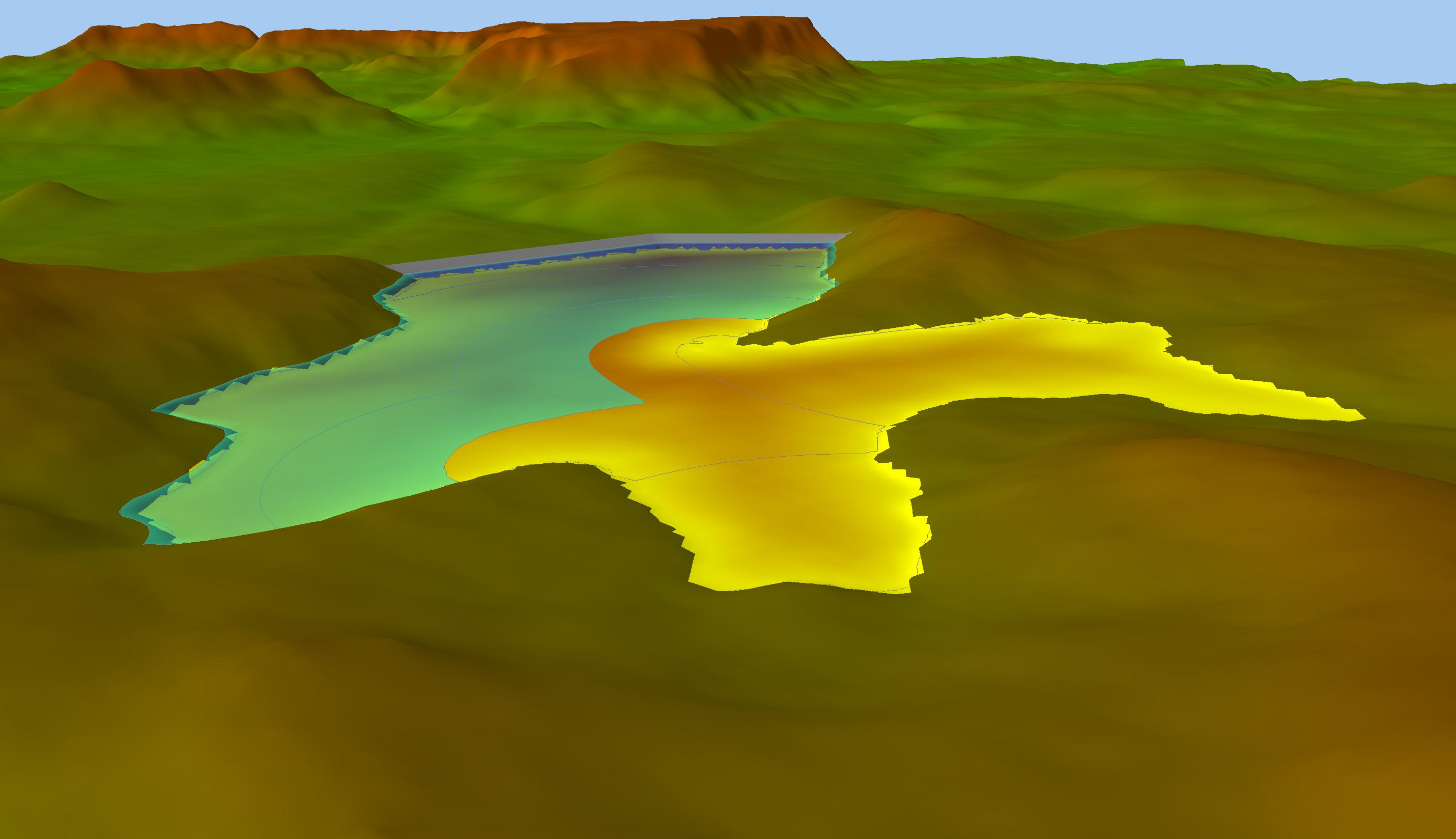Tailings Deposition Modelling
Rift TD is an advanced three-dimensional Digital Terrain Model specifically developed to model tailings deposition. It is a powerful tool that facilitates tailings storage facility:
- Options assessment/site selection
- Conceptual and detailed design
- Deposition planning
- Operation and management
- Water management
Rift TD is incredibly flexible and can model:
- upstream;
- downstream; and
- centreline deposition.
Features
Rift TD's features include:
- Tailings flow down valleys and around obstacles
- Deposition to known tonnage(s)
- Targeted maximum tonnage
- Supernatant pond modelling to a known freeboard, volume, or elevation
- Sub-aerial and sub-aqueous beach profiles
- Non-linear beach profiles
- Google Earth export
- Deposition from:
- Deposition Nodes; and/or
- Deposition Lines; and/or
- Deposition Paths
- Deposition points that can move as they are raised
- Fully developed tailings stage capacity curves at user defined elevation increments
- Detailed deposition output for each:
- Deposition raise
- Deposition location
Supporting Modules
Use the Digital Terrain Modelling Module to prepare a deposition surface. The Digital Terrain Modelling Module is included with Rift TD.
Use the Dam Breach Module, Rift FD to assess dam breach scenarios following a deposition model run. Rift FD requires a separate licence to Rift TD.

Model Output
Deposition points are raised from a start elevation to an end elevation in discrete, user defined intervals, or raises, mimicking physical deposition. This allows us to generate detailed deposition results over the life of the operating facility.
Model output for each raise includes:
- Deposition end date
- Raise fill time
- Deposition plan area
- Sub-aerial and sub-aqueous tonnages
- Sub-aerial and sub-aqueous volumes
- Supernatant pond volumes, if modelled
Deposition results are also available for each deposition location.
Any of the saved raise surfaces can be loaded and viewed following a model run.